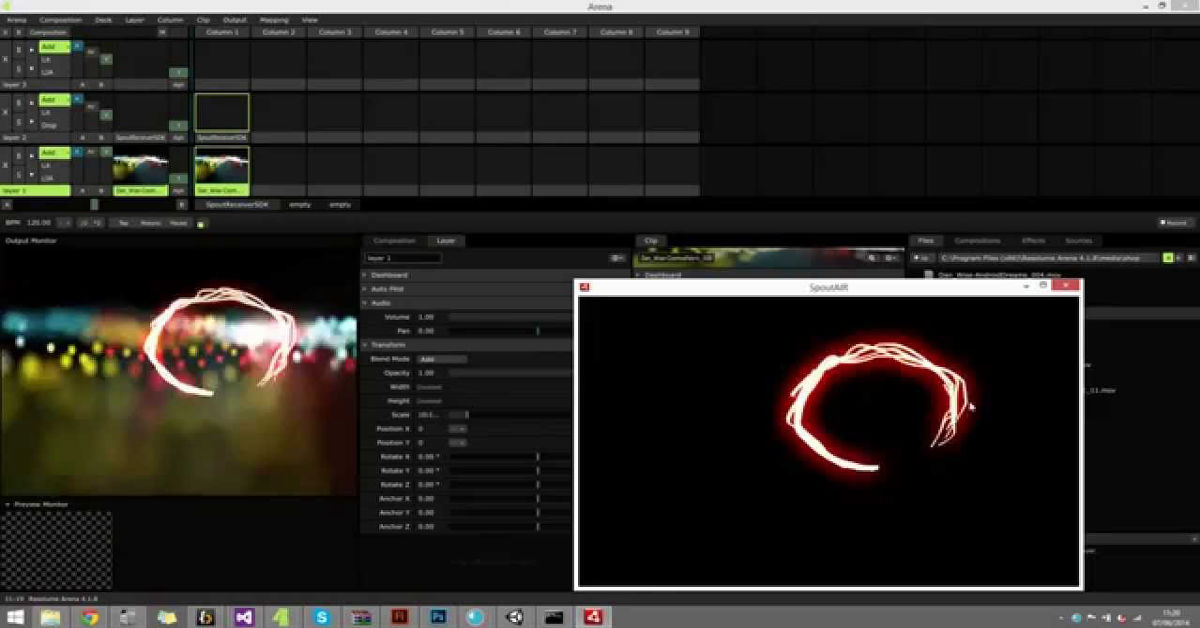Cross-platform development has always aimed to deliver native experiences while keeping codebases manageable. Adobe AIR is one of the prominent frameworks used to build applications for multiple platforms using a single codebase. However, even powerful tools like AIR have limitations when accessing device-specific functionality. This is where AIR Native Extension come into play. They provide the flexibility to incorporate platform-specific features while retaining the advantages of cross-platform development.
What is AIR Native Extension (ANE) ?
AIR Native Extension is a mechanism in Adobe AIR that enables ActionScript-based applications to interact with native code written in platform-specific languages. It allows access to native APIs, device sensors, and other advanced hardware capabilities that are otherwise unavailable directly through AIR.
ANE files act as bridges between the high-level ActionScript logic and the low-level native platform features, making it possible to extend the capabilities of an AIR application without losing portability.
Why Developers Use AIR Native Extensions
Developers often encounter functionality gaps in AIR. ANEs fill these gaps by enabling:
- Access to device-specific hardware
- Use of third-party SDKs (e.g., Firebase, ARKit)
- Integration with system services and sensors
- Performance-intensive operations with native speed
This flexibility allows applications to stay competitive and feature-rich while maintaining cross-platform architecture.
How ANEs Enhance Adobe AIR Applications
By integrating ANEs, developers can:
- Add platform-specific features without duplicating codebases
- Utilize native libraries for critical functionalities
- Deliver superior user experience through hardware integration
- Reduce development overhead by reusing native plugins across platforms
The enhancement isn’t just functional but also experiential. Apps feel more native and responsive when optimized through ANEs.
Key Components of an ANE Package
An AIR Native Extension is a structured archive containing:
- Native libraries (e.g., .jar for Android, .framework for iOS)
- An ActionScript interface (.swc file)
- Extension descriptor (XML metadata)
- Platform-specific resources (e.g., images, configuration files)
Each component ensures that the extension works seamlessly across platforms while interfacing correctly with the AIR runtime.
Supported Native Languages and Platforms
AIR Native Extensions support major platforms and corresponding native languages:
- iOS: Objective-C, Swift
- Android: Java, Kotlin
- Desktop: C++, C#, Objective-C
This wide support allows developers to work with their preferred language environments while leveraging the AIR framework for front-end development.
ANE Development Workflow
Creating an ANE involves several essential steps:
- Define required native functionality
- Write native code in platform-specific language
- Develop an ActionScript API
- Compile native and ActionScript code
- Package everything into a .ane file
- Integrate into AIR project
- Test across platforms
This structured workflow ensures compatibility, performance, and maintainability.
Creating the Native Code
The first step in ANE development is writing the native functionality. This code handles the actual interaction with platform APIs or hardware. For instance:
- Accessing biometric sensors on Android
- Integrating SiriKit on iOS
- Managing file systems on desktop
The complexity of native code varies depending on the target platform and intended functionality.
Writing ActionScript Wrappers
Once native functionality is implemented, developers create an ActionScript wrapper. This wrapper exposes a public API that the AIR application can call. It acts as an intermediary, managing data conversion and communication between ActionScript and native layers.
Packaging an ANE File
Packaging involves bundling all components into a single .ane file using the AIR Developer Tool (ADT). The key steps include:
- Including native libraries
- Compiling ActionScript API to SWC
- Creating extension descriptor XML
- Defining platform options and configurations
This file can then be added to any AIR project that requires the functionality.
Integration into AIR Applications
Integrating an ANE is straightforward:
- Add the .ane file to the project
- Reference the ActionScript API
- Call the native methods via exposed classes
- Handle native events and callbacks
This seamless integration process empowers developers to use native capabilities while writing most of their code in ActionScript.
Use Cases and Real-World Examples
Common use cases for ANEs include:
- Camera and photo library access
- Push notifications
- In-app purchases and billing
- Biometric authentication
- Geolocation and maps
- Bluetooth and device communication
For example, an app needing secure authentication could use an ANE to access Android FingerprintManager or iOS Face ID APIs.
Performance and Security Considerations
Using native extensions can improve performance in areas where ActionScript might be less efficient, such as real-time processing or hardware acceleration. However, it also introduces security concerns:
- Validate inputs to prevent injection attacks
- Manage permissions properly
- Avoid exposing sensitive native functions to ActionScript
Proper handling and sandboxing are essential to keep the application secure and stable.
Common Challenges and Solutions
Developers often face these issues:
- Cross-platform inconsistencies
- Debugging native crashes
- Versioning conflicts between native libraries
Solutions include:
- Using conditional compilation for platform-specific code
- Implementing detailed logging and exception handling
- Following semantic versioning practices
Testing and Debugging ANEs
Effective testing strategies include:
- Using platform emulators and real devices
- Logging native code outputs to console
- Isolating ANE calls during debugging
- Creating unit tests for ActionScript wrapper
Debugging native code may require platform-specific tools like Xcode or Android Studio.
Best Practices for ANE Development
- Keep native code modular and clean
- Ensure backward compatibility
- Document APIs clearly
- Minimize dependencies
- Avoid unnecessary permissions
- Test thoroughly on all supported platforms
Adhering to these practices results in stable, efficient, and secure ANEs.
Tools and Resources for Developers
Helpful tools and environments for ANE development:
- Adobe AIR SDK
- AIR Developer Tool (ADT)
- Android Studio (for Android native code)
- Xcode (for iOS native code)
- Visual Studio (for Windows native code)
- ANELAB for testing and debugging
Documentation and community forums also offer valuable support.
Future of ANEs in Cross-Platform Development
With increasing demand for native experiences, ANEs are more relevant than ever. They provide a practical way to future-proof AIR applications by:
- Enabling access to emerging hardware
- Supporting new platform features
- Extending the lifespan of existing codebases
While new frameworks are emerging, ANEs still offer unmatched flexibility for AIR developers.
Alternatives to AIR Native Extensions
Other frameworks provide similar native bridging capabilities:
- React Native with Native Modules
- Flutter with Platform Channels
- Cordova with Native Plugins
However, for developers invested in AIR, ANEs remain the most effective approach.
Key Components and Tools for ANE Development
| Component | Description | Tool/Language Used |
| Native Functionality | Platform-specific code logic | Java, Swift, C++, etc. |
| ActionScript API | Interface between AIR and native code | ActionScript, .swc |
| Extension Descriptor | Metadata for the ANE | XML |
| Packaging Tool | Creates the final .ane file | AIR Developer Tool (ADT) |
| Android Build | Generates .jar or .so libraries | Android Studio |
| iOS Build | Compiles .framework or static libs | Xcode |
| Windows Build | Produces .dll or other binaries | Visual Studio |
| Debugging Tools | Debug native and AIR code | Logcat, Console, ANELAB |
| Testing Devices | Ensure cross-platform compatibility | Real devices, emulators |
| Community Support | Forums, GitHub, documentation | Adobe DevNet, StackOverflow |
Conclusion and Next Steps
AIR Native Extension is a powerful asset in the Adobe AIR ecosystem. It unlocks a world of possibilities by allowing developers to tap into native device capabilities while maintaining a cross-platform codebase. Whether you’re building a utility app, a game, or a full-fledged enterprise solution, ANEs offer the flexibility, performance, and user experience modern apps require.
If you’re an AIR developer seeking to push your applications further, exploring and integrating ANEs should be your next move. Dive into native development, understand your target platforms, and start building rich, native-enhanced experiences today.
FAQ: AIR Native Extension
What is an AIR Native Extension?
It is a packaged module that allows AIR applications to access native platform functionality through ActionScript interfaces.
Which platforms support ANEs?
iOS, Android, Windows, and macOS support ANEs via native code.
Do I need to write native code to use ANEs?
Yes, at least part of the functionality must be written in a native language suitable for the platform.
Can I use multiple ANEs in one project?
Yes, as long as they are compatible and do not conflict in their dependencies.
Are there ready-made ANEs available?
Yes, several third-party vendors and open-source libraries provide prebuilt ANEs for common functionalities.







